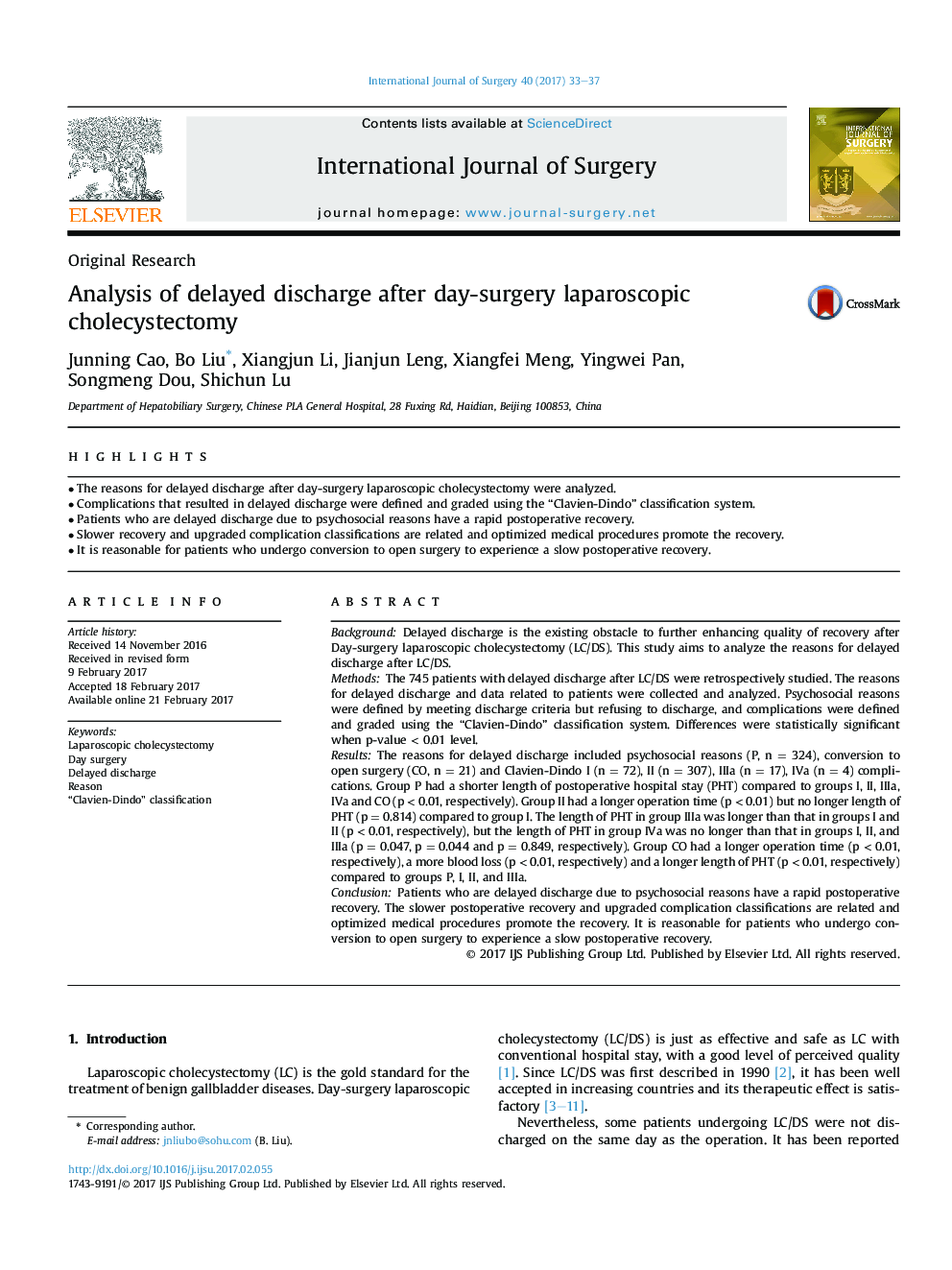| Article ID | Journal | Published Year | Pages | File Type |
|---|---|---|---|---|
| 5732276 | International Journal of Surgery | 2017 | 5 Pages |
â¢The reasons for delayed discharge after day-surgery laparoscopic cholecystectomy were analyzed.â¢Complications that resulted in delayed discharge were defined and graded using the “Clavien-Dindo” classification system.â¢Patients who are delayed discharge due to psychosocial reasons have a rapid postoperative recovery.â¢Slower recovery and upgraded complication classifications are related and optimized medical procedures promote the recovery.â¢It is reasonable for patients who undergo conversion to open surgery to experience a slow postoperative recovery.
BackgroundDelayed discharge is the existing obstacle to further enhancing quality of recovery after Day-surgery laparoscopic cholecystectomy (LC/DS). This study aims to analyze the reasons for delayed discharge after LC/DS.MethodsThe 745 patients with delayed discharge after LC/DS were retrospectively studied. The reasons for delayed discharge and data related to patients were collected and analyzed. Psychosocial reasons were defined by meeting discharge criteria but refusing to discharge, and complications were defined and graded using the “Clavien-Dindo” classification system. Differences were statistically significant when p-value < 0.01 level.ResultsThe reasons for delayed discharge included psychosocial reasons (P, n = 324), conversion to open surgery (CO, n = 21) and Clavien-Dindo I (n = 72), II (n = 307), IIIa (n = 17), IVa (n = 4) complications. Group P had a shorter length of postoperative hospital stay (PHT) compared to groups I, II, IIIa, IVa and CO (p < 0.01, respectively). Group II had a longer operation time (p < 0.01) but no longer length of PHT (p = 0.814) compared to group I. The length of PHT in group IIIa was longer than that in groups I and II (p < 0.01, respectively), but the length of PHT in group IVa was no longer than that in groups I, II, and IIIa (p = 0.047, p = 0.044 and p = 0.849, respectively). Group CO had a longer operation time (p < 0.01, respectively), a more blood loss (p < 0.01, respectively) and a longer length of PHT (p < 0.01, respectively) compared to groups P, I, II, and IIIa.ConclusionPatients who are delayed discharge due to psychosocial reasons have a rapid postoperative recovery. The slower postoperative recovery and upgraded complication classifications are related and optimized medical procedures promote the recovery. It is reasonable for patients who undergo conversion to open surgery to experience a slow postoperative recovery.
